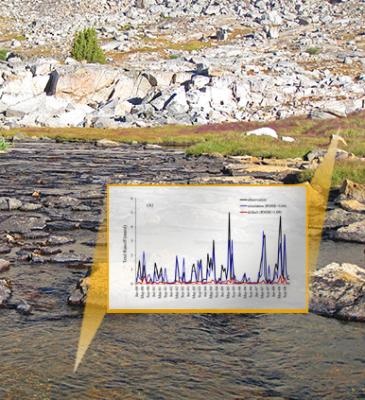Adding Varoom to a Community Land Model: New study finds accurate parameters rev up water and energy flux modeling
A high-performance engine requires constant work under the hood. Climate models are simulation machines with similar needs. Scientists at Pacific Northwest National Laboratory applied their sharpest calibration tools to improve water cycle representation in the Community Land Model. They developed a statistics-based approach to get the best estimates of climate model parameters. Applying this high-octane approach on water surface and runoff observations significantly improves simulating water and energy fluxes in the model under different climate and environmental conditions.
The research team, led by scientists at PNNL, developed an approach combining a stochastic inversion/calibration and Metropolis-Hasting sampling method that generates an effectively controlled series of random model parameter value choices until the optimal estimates are reached. The quality of these estimates depends on several factors that the researchers evaluated in this study, such as:
- How many observations are available
- How and where to pull initial guesses of model parameters
- How the observations are measured (day to day, or averaged monthly) to view the day-to-day variations or longer term averaged behavior
- How different the allowed new guesses are from the current guesses
- How the different kinds of observations are used for model improvement.
To increase computational efficiency, the team used PNNL’s supercomputers to carry out the model calibrations along multiple lines simultaneously. Each chain consisted of a progression of initial guesses toward the true values of these model parameters.
Their analyses may be extended to a broader range of sites under different climate, hydrologic, and vegetation/soil conditions. The team’s improved predictions coupled with the range of uncertainty for each will improve water management decision-making.
Computational techniques are as critical to climate modeling as using the right tools to tune a Formula One racing car. As computational power increases, climate modeling researchers have developed tools to optimize and improve parameters—like the valves in an engine—in the models. The best model parameters yield model results that mimic actual climate observations. The tools generating those parameters help natural resource managers and policy makers to understand the implications of climate change. In this study, the researchers proved the viability of a statistical approach to improve model parameters. The new approach provides a better understanding of water and energy changes under a large group of climate conditions.
In the past decades, numerous inversion strategies have been developed and applied in Earth systems science to constrain model parameters for improving model skill. However, because solution uniqueness and stability are usually violated in practice, some regularization is generally needed to introduce mild assumptions on the solution and prevent parametric over-fitting. For the first time, a team led by DOE researchers at Pacific Northwest National Laboratory demonstrated that a stochastic Bayesian inversion approach integrated with Markov Chain Monte Carlo sampling could in general improve the simulation of the Community Land Model under different climate and environmental conditions. The team evaluated inversion methodologies at select field sites based on global sensitivity analyses performed in previous studies. Using heat flux data, temporal resolution of observations has clear impacts on the inversion results, but the impacts are smaller when using runoff data. They found significant improvements in the model simulations that better match the observed heat flux and runoff by using the estimated parameters compared to using the default parameter values. Improvements in heat flux were found especially in areas with strong energy and water constraints. Bayesian model averaging that integrates the posterior estimates with different reference acceptance probabilities can smooth the posterior distributions and provide more reliable parameter estimates, but at the expense of wider uncertainty bounds.
This research was supported by the Climate Science for a Sustainable Energy Future project, funded by the U.S. Department of Energy, Office of Science through the Earth System Modeling Program. Additional support for the model configuration and data sets used in the numerical experiments was provided by the PNNL Laboratory Directed Research and Development (LDRD) Program’s PNNL Platform for Regional Integrated Modeling and Analysis (PRIMA) Initiative.

